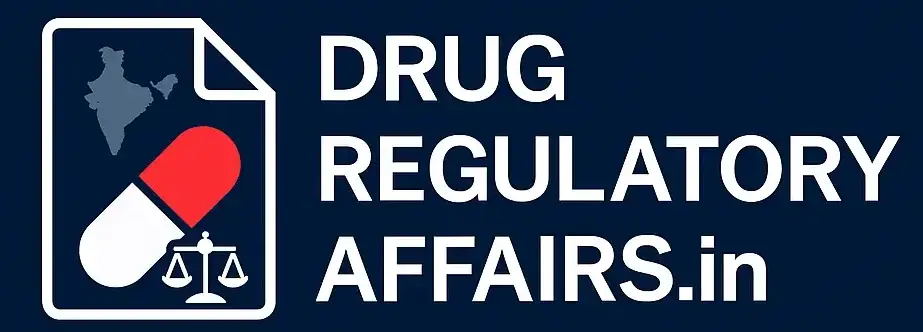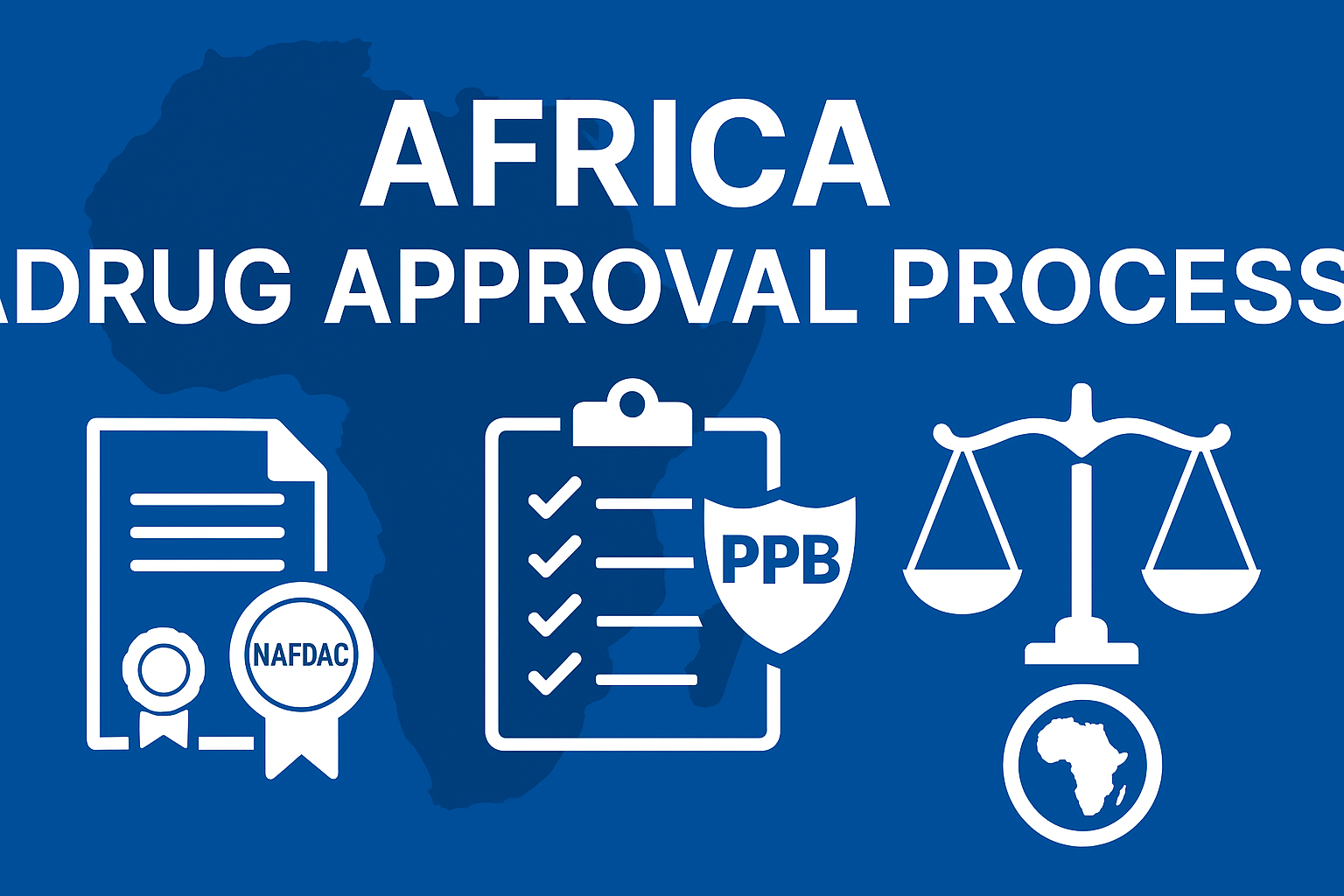Africa Drug Approval Process – How to Register a Drug in Nigeria, Kenya, and Across the Continent
Africa Drug Approval Process: Africa represents a rapidly growing pharmaceutical market, projected to surpass $70 billion USD by 2030.
The Africa Drug Approval Process varies significantly by country, but a coordinated strategy can improve outcomes.
With rising healthcare demand, local manufacturing initiatives, and increasing government focus on regulatory standardization, understanding the drug approval process in Africa is critical for companies seeking market access.
Read More: GCC Drug Approval Process – Saudi FDA, UAE MoH, and Gulf Central Committee Explained
However, unlike the USFDA or EMA which operate under centralized authorities, Africa has no single unified regulatory body—yet.
Each country manages its own regulatory process. Nonetheless, several regional harmonization initiatives like ZAZIBONA, EAC-MRH, and the upcoming African Medicines Agency (AMA) are reshaping the landscape.
Also Read: MHRA Drug Approval Process – How to Register a Drug in the UK (Step-by-Step Guide)
This guide about Africa Drug Approval Process provides a comprehensive breakdown of how to register drugs across African nations, with focus on Nigeria, Kenya, and the continent-wide efforts.
🌍 Regulatory Environment in Africa – An Overview
🇳🇬 Nigeria – NAFDAC (National Agency for Food and Drug Administration and Control)
- Largest pharma market in Sub-Saharan Africa.
- Oversees drug registration, pharmacovigilance, and import control.
🇰🇪 Kenya – PPB (Pharmacy and Poisons Board)
- Known for streamlined eCTD system and participation in EAC-MRH.
- Key regulatory authority in East Africa.
🇿🇦 South Africa – SAHPRA (South African Health Products Regulatory Authority)
- Most advanced regulatory framework in Africa.
- Recognized globally and often a reference for other African nations.
🌐 Emerging Continental Agency – African Medicines Agency (AMA)
- Treaty signed by 27+ countries.
- Will eventually provide centralized review and harmonization.
🛤️ Key Pathways to Africa Drug Approval Process
There are two major routes for registering drugs in Africa:
1. National Drug Registration (Country-Specific)
Each country has its own authority, submission process, timeline, and document format.
2. Regional Harmonized Registration
Submit once and gain market access across multiple countries.
- ZAZIBONA: SADC countries (Zimbabwe, Zambia, Botswana, Namibia, etc.)
- EAC-MRH: East African Community (Kenya, Uganda, Rwanda, Tanzania, etc.)
- ECOWAS-MRH: West Africa (pilot phase)
- AMA: Continental-level framework (in development)
📋 Documents Required for Africa Drug Approval Process– CTD Format
Most African regulators follow the ICH CTD (Common Technical Document), with Module 1 customized per country.
Commonly Required Documents:
Module 1 – Regional
- Cover letter
- Application form (country-specific)
- Certificate of Pharmaceutical Product (CPP)
- Good Manufacturing Practice (GMP) certificate
- Package Insert / Labeling (English and/or French)
- Local agent letter
Modules 2–5
- Summaries and full clinical, non-clinical, and quality data
📝 eCTD is optional in many countries but is gaining momentum.
🇳🇬 Nigeria – NAFDAC Drug Registration Process
NAFDAC is responsible for the regulation and control of importation, exportation, manufacture, advertisement, and distribution of pharmaceuticals.
Key Steps:
- Appointment of a Local Agent (mandatory)
- Online Application on NAFDAC’s E-Registration Portal
- Dossier Submission (CTD)
- Payment of Processing Fees
- Laboratory Evaluation of Samples
- Facility Inspection / GMP Compliance
- Product Approval and Registration Number Issuance
Timeline:
- 8 to 12 months, depending on product type and completeness of documents.
Fees:
- Ranges from ₦750,000 to ₦1,500,000 (approx. $1,000 – $2,000 USD)
🇰🇪 Kenya – PPB (Pharmacy and Poisons Board)
Kenya’s PPB is one of the most digitized authorities in Africa.
Key Features:
- Accepts CTD in eCTD or electronic format
- Strong inspection and post-marketing surveillance system
Steps:
- Local Agent Registration
- Application Submission via PRS Portal
- Dossier Review & Sample Testing
- Labeling Review and Product Approval
Timeline:
- 6 to 9 months for full review and marketing authorization
🇿🇦 South Africa – SAHPRA
SAHPRA is a semi-autonomous authority formed after replacing MCC in 2018. It’s considered a Stringent Regulatory Authority (SRA) by WHO.
Key Features:
- Accepts full ICH CTD
- Active member of ICH, PIC/S, and ZaZiBoNa
- Long queues but increasing use of reliance models (EMA/WHO approvals)
Timeline:
- New applications may take 12 to 24 months, depending on product class
Fast Track:
- Products for priority diseases (HIV, TB, malaria) qualify for expedited review
🌐 Regional Harmonization Initiatives
🟢 ZAZIBONA
- Founded in 2013 under SADC
- Collaborative review mechanism
- Member countries: Zimbabwe, Zambia, Botswana, Namibia, South Africa, etc.
- Submit in one country, get recognition in all members
🟣 EAC-MRH (East African Community)
- Covers Kenya, Uganda, Rwanda, Tanzania, Burundi, South Sudan
- Centralized dossier review with national-level authorization
- Application via EAC portal and national agents
🔵 AMA (African Medicines Agency)
- Treaty-based regulatory body under African Union
- Still under development
- Will eventually provide pan-African approval similar to EMA
💸 Regulatory Timelines & Fees (Approximate)
| Country/Region | Timeline | Avg. Cost (USD) |
|---|---|---|
| Nigeria (NAFDAC) | 8–12 months | $1,000–$2,000 |
| Kenya (PPB) | 6–9 months | $1,200–$2,500 |
| South Africa (SAHPRA) | 12–24 months | $3,000–$6,000 |
| ZAZIBONA | 6–12 months | $3,000+ |
| EAC-MRH | 9–15 months | $2,500+ |
📦 Post-Approval Requirements
- Pharmacovigilance Compliance (local QPPV in some countries)
- Labeling Revisions as per authority changes
- Batch Release Notifications
- GMP Renewals every 3–5 years
- Renewal of Product License every 5 years (differs by country)
🧠 Challenges in Africa Drug Registration
Companies often underestimate the complexity of the Africa Drug Approval Process when entering markets like Kenya or Nigeria.
- Multiplicity of National Systems
- Need to register separately in each country unless using regional mechanisms.
- Language Barriers
- French required in West Africa (Senegal, Ivory Coast)
- Arabic required in North Africa (Morocco, Egypt)
- Frequent Changes in Guidelines
- Keeping track of updates is crucial.
- Slow Review Timelines
- Under-resourced authorities may have backlogs.
🔁 Comparison with USFDA and EMA
| Criteria | Africa | USFDA | EMA |
|---|---|---|---|
| Central Authority | No (in development) | Yes | Yes |
| CTD Format | Yes (partial) | Yes | Yes |
| eCTD | Limited | Mandatory | Mandatory |
| Review Time | 6–24 months | ~10 months | ~210 days |
| Post-Market Surveillance | Weak in some regions | Strong | Strong |
🧩 Tips for Successful Drug Registration in Africa
- Hire local regulatory experts/agents early
- Customize Module 1 as per each country
- Use WHO PQ or SRA approval as leverage
- Leverage regional initiatives (ZAZIBONA, EAC-MRH)
- Translate documents properly for Francophone or Arabic-speaking countries
❓ FAQs – Africa Drug Approval Process
Q1. Is there a single drug approval system for Africa?
No, each country has its own system. However, regional initiatives like ZAZIBONA and AMA are helping harmonize the process.
Q2. Is CTD format mandatory?
Yes, but some countries still accept older formats. Always check guidelines.
Q3. Do I need a local agent?
Yes, for almost all African countries.
Q4. How long does approval take?
6 to 24 months depending on country and product.
Q5. Can WHO or EMA approval help?
Yes, via reliance or abridged review pathways in some nations.
✅ Conclusion: Africa Drug Approval Process
Africa offers vast potential for pharmaceutical expansion, but navigating the continent’s diverse regulatory frameworks requires strategic planning.
Mastering the Africa Drug Approval Process requires both local knowledge and a commitment to compliance.
Companies often underestimate the complexity of the Africa Drug Approval Process when entering markets like Kenya or Nigeria.
Companies must tailor their approach to local conditions, leverage harmonization frameworks like ZAZIBONA and EAC, and stay updated on emerging initiatives like AMA.
With proper regulatory strategy, hiring the right local agents, and thorough documentation, success in Africa’s pharmaceutical sector is achievable and rewarding.

